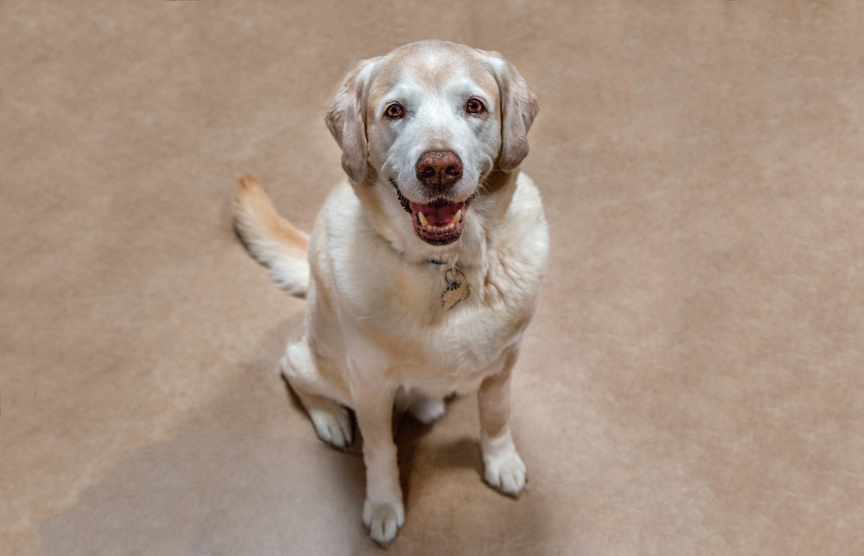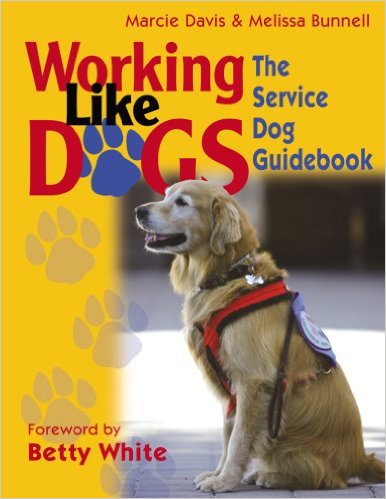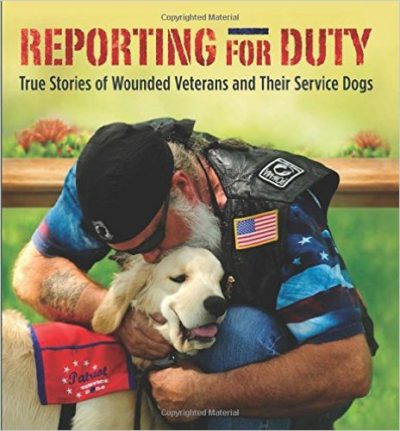My retired service dog, Whistle, has been fortunate with being in good health most of his life, but now that he’s 13, he’s really been having mobility issues. My husband and I started to notice him losing his balance and even falling last year.
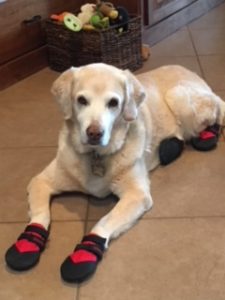
Whistle in Ultra Paws Durable Boots
We took Whistle to his regular veterinarian and he recommended veterinary rehabilitation, which is something like physical therapy for people, but designed for animals. At his first visit to Bounce Back, the practice run by veterinarian Dr. Sue McKelvey, we were blown away by the physical activities she had Whistle do. There was a therapy pool where he walked on a treadmill in water, agility exercises with FitPAWS equipment and a little trampoline, and laser treatment.
We’ve seen such positive results in Whistle, both mentally and physically. And he loves going for his sessions! Whistle has never been a water dog, but he even enjoys the therapy pool. You can see the big smile on his face when he knows he’s going to see Dr. McKelvey and her staff for therapy. He can’t get into the van fast enough when it’s time to go!
Now that he’s been doing the rehab sessions since October, we see a vast improvement in his mobility and physical strength. Besides the sessions, Dr. McKelvey has given us guidance on how to help him at home. She also recommended Ultra Paws dog boots to help Whistle with his footing, and they have been very effective.
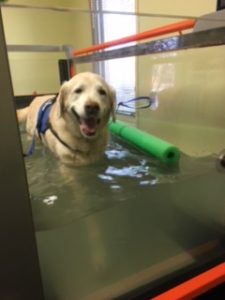
Whistle enjoying hydrotherapy
We chatted with Dr. McKelvey about Whistle and veterinary rehab in general. She said that Whistle is a classic case of a geriatric dog who has started to lose mobility. She has a lot of experience helping dogs with their mobility and pain management through integrative treatments which might include underwater treadmill hydrotherapy, laser therapy, exercises, acupuncture, and chiropractic treatments. The veterinarian at a rehab practice gets all the records from the regular vet, so she can work as part of a team to take the best care of your dog.
Many older dogs have arthritis in multiple joints or neurological issues. Often older dogs need to lose weight, which will help with their pain management. By controlling their pain, with exercise, laser, and other treatments, the dogs can then move more comfortably and move more. Dr. McKelvey guides the dog owners with things to do at home, such as how much to walk their dog, and what types of stretches or massage they can provide. “We help the dogs get stronger, helping to slow their rate of decline and keeping them as comfortable and mobile as possible, for as long as possible,” said Dr. McKelvey.
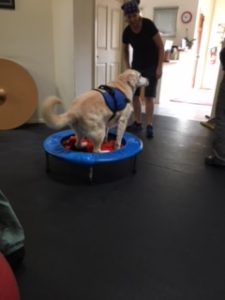
Whistle on the trampoline
Veterinary rehabilitation is becoming more common nationwide, as part of regular veterinary clinics and with separate rehab practices. For Dr. McKelvey, who spent 16 years as a regular veterinarian before starting her own rehab practice in Santa Fe, NM, 5 years ago, doing rehab has been “the most rewarding experience.”
Whistle and I are so happy we were introduced to veterinary rehabilitation and Dr. McKelvey. Let us know if you have tried this type of treatment for your dog, and what your experiences have been.
Links for more information:
Bounce Back Integrative Veterinary Rehabilitation
Ultra Paws
FitPAWS

